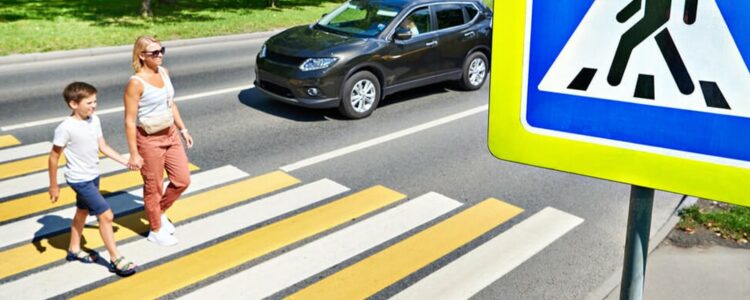
Every day, millions of people walk to work, school, shops, or simply for exercise. But with growing traffic congestion and driver distractions, pedestrian-car accidents are becoming a tragic and common occurrence. In many cases, these accidents result in serious injuries—or worse—because pedestrians are extremely vulnerable compared to vehicle occupants.
If you or someone you love has been involved in a pedestrian-car accident, understanding your rights, legal options, and what steps to take next can make a major difference in your recovery—both physically and financially.
What Is a Pedestrian-Car Accident?
A pedestrian-car accident occurs when a motor vehicle collides with someone who is walking, jogging, standing, or crossing the street. These incidents often happen at:
Crosswalks
Intersections
Parking lots
Driveways
School zones
Bus stops
In most cases, the pedestrian suffers the worst injuries due to the lack of protection.
Common Causes of Pedestrian-Car Accidents
While every incident is different, many pedestrian accidents share similar causes:
1. Distracted Driving
Texting, talking on the phone, eating, or using in-car technology can cause drivers to overlook pedestrians.
2. Speeding
Faster speeds reduce reaction time and increase the force of impact, making accidents deadlier.
3. Failure to Yield
Drivers often fail to yield the right-of-way at marked or unmarked crosswalks.
4. Driving Under the Influence
Alcohol and drugs impair judgment and reduce a driver’s ability to react.
5. Poor Visibility
Accidents are more likely at night, in foggy weather, or when pedestrians wear dark clothing.
6. Left-Hand Turns
Drivers making left-hand turns may focus on oncoming traffic and not notice pedestrians crossing.
Who Is At Fault?
Determining fault in a pedestrian-car accident can be complex. Generally, drivers are held responsible when they violate traffic laws or fail to yield to pedestrians. However, pedestrians can also share fault if they:
Cross against a signal
Jaywalk (cross outside of designated crosswalks)
Suddenly dart into traffic
Walk while distracted (e.g., texting)
Some states follow comparative negligence laws, which means that both the driver and pedestrian can share blame. In these states, compensation may be reduced based on the injured person’s percentage of fault.
What to Do Immediately After a Pedestrian-Car Accident
✅ 1. Call Emergency Services
Always call 911, even if injuries seem minor. A police report is a crucial piece of evidence for your claim.
✅ 2. Get Medical Attention
Your health is the top priority. Some injuries (like internal bleeding or brain trauma) may not be visible right away.
✅ 3. Collect Evidence
If you’re able, gather:
Driver and witness contact info
Photos of the scene, vehicle, and your injuries
Statements from witnesses
✅ 4. Avoid Talking About Fault
Do not admit fault, apologize, or discuss details with the other driver. What you say could be used against you later.
✅ 5. Contact a Personal Injury Attorney
A lawyer can guide you through the claims process and help protect your rights.
What Compensation Can Victims Receive?
If a driver was at fault, you may be eligible to file a personal injury claim and seek compensation for:
Medical expenses (emergency care, surgery, therapy)
Lost wages (including future earnings if you can’t return to work)
Pain and suffering
Disability or disfigurement
Emotional distress
Wrongful death damages (if a loved one was killed)
Each case is different, but having a strong legal advocate can help maximize your recovery.
How Long Do You Have to File a Claim?
There is a legal deadline called the statute of limitations for filing a pedestrian-car accident lawsuit. It varies by state, but typically ranges from 1 to 3 years after the date of the accident. If you miss this deadline, you may lose your right to compensation entirely.
Special rules may apply if the at-fault vehicle was a government vehicle, like a city bus or police car. In those cases, you may have to file a notice of claim within just 60–90 days.
How Can a Lawyer Help?
A pedestrian accident lawyer can help you by:
Investigating the accident and gathering evidence
Dealing with insurance adjusters who may try to minimize your claim
Calculating the full value of your damages
Filing paperwork and handling deadlines
Negotiating a fair settlement—or going to court if necessary
Most pedestrian accident attorneys work on a contingency fee basis, meaning you only pay if they win your case.
Preventing Pedestrian Accidents
While drivers bear a major responsibility, pedestrians can take precautions to stay safe:
Cross streets at designated crosswalks
Wear bright or reflective clothing at night
Avoid using phones or headphones while walking
Make eye contact with drivers before crossing
Obey traffic signals and pedestrian signs
Conclusion: Know Your Rights and Act Fast
A pedestrian-car accident can change your life in seconds. The physical injuries, emotional toll, and financial burden can be overwhelming. But you don’t have to face it alone.
If you’ve been injured by a negligent driver, an experienced pedestrian accident attorney can help you hold them accountable and fight for the compensation you deserve. The sooner you take action, the stronger your case will be.
